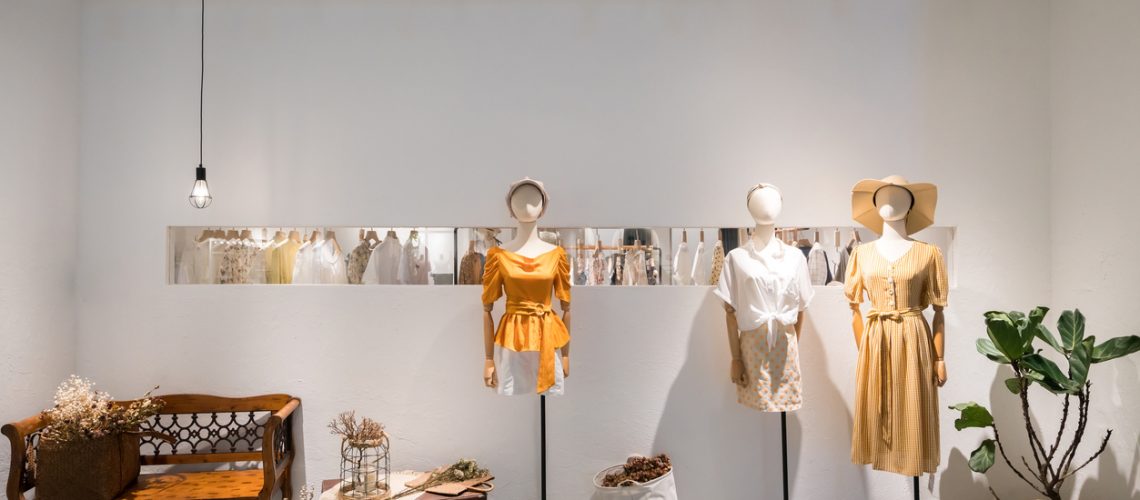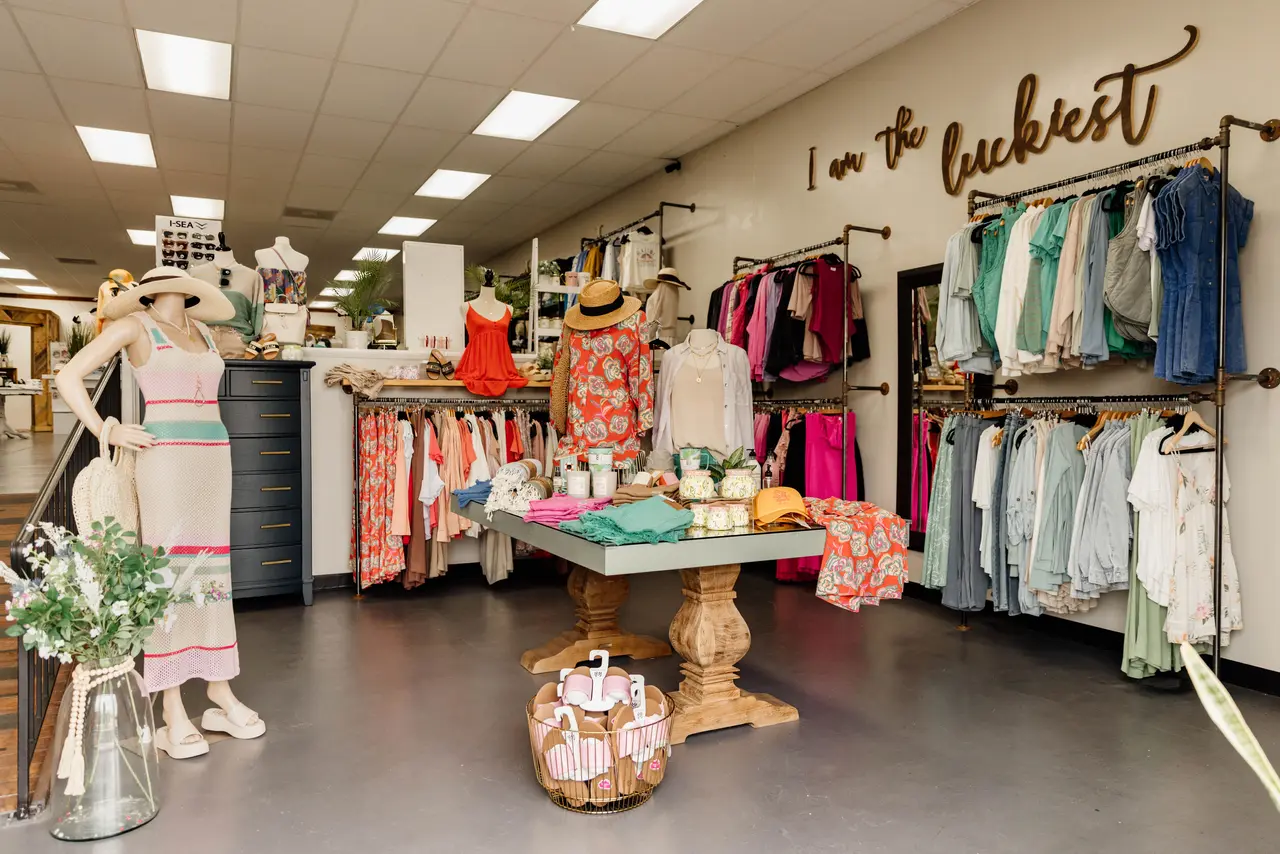Exploring the World of Sustainable Boutique Fashion Brands
Exploring the World of Sustainable Boutique Fashion Brands
Blog Article
Discovering the Evolution and Influence of Clothes on Modern Fashion Trends
The development of clothing has actually significantly affected modern fashion fads, combining historic criteria with cutting-edge advancements. Iconic figures like Coco Chanel and Yves Saint Laurent changed the apparel industry by introducing concepts that prioritize comfort and access, which remain to reverberate today. Technical strides in locations such as 3D printing and wise fabrics are redefining design opportunities and consumer experiences (boutique fashion). In addition, the expanding emphasis on inclusivity and sustainability is reshaping industry requirements. As we consider these complex influences, one should question just how these components collectively redefine fashion's function in mirroring and shaping contemporary culture.
Historical Style Influencers
In the tapestry of fashion history, specific figures have actually left an indelible mark, forming the trends and styles that specify entire eras. Coco Chanel, an innovative designer, redefined ladies's style by presenting comfortable, classy clothes that departed from limiting bodices. Her renowned Chanel fit and little black outfit have actually become ageless staples in wardrobes worldwide. In A Similar Way, Christian Dior's post-war "Makeover" in 1947, with its celebration of feminineness via full skirts and cinched midsections, noted a go back to luxury and has remained to affect designers.
Elsa Schiaparelli is one more critical number, renowned for her avant-garde layouts that integrated surrealist art, working together with Salvador Dalí to create whimsical items that challenged conventional visual appeals. Her ingenious use of shade and bold patterns reverberates in contemporary fashion. Yves Saint Laurent, at the same time, equalized high fashion with prêt-à-porter collections, bringing runway styles to the masses and setting a precedent for modern ready-to-wear lines.
These visionaries, amongst others, not only transformed style in their times but additionally set withstanding fads that resonate in today's fashion industry, giving a structure upon which contemporary designers continue to introduce and develop. Their traditions emphasize the significance of imagination and daring in style's ever-evolving story.
Technical Innovations in Fashion
In the middle of the dynamic landscape of the apparel industry, technological improvements stand at the forefront of innovation, reshaping exactly how designers produce and consumers involve with style. The assimilation of 3D printing has revolutionized style processes, making it possible for designers to explore complex structures and sustainable materials that were previously impossible. This technology facilitates rapid prototyping, lowering waste and speeding up manufacturing times.

Smart fabrics, embedding innovation into materials, are also transforming the sector. Technologies like temperature-regulating and self-cleaning fabrics use improved capability and comfort. Wearable innovation, incorporating functions like fitness monitoring and interaction, adds a brand-new dimension to style, merging visual appeals with usefulness.
Social Changes and Style
As technological innovations remain to improve the garment industry, cultural shifts are similarly significant, redefining design and customer preferences. In the last few years, the rise of social media systems has accelerated the dissemination of global style trends, permitting varied social impacts to exist side-by-side and assemble. This electronic interconnectivity has facilitated the rapid exchange of ideas, leading to a more diverse and inclusive analysis of style that shows the multifaceted nature of contemporary society.
Social recognition and recognition have prompted developers to attract ideas from a more comprehensive range of ethnic and historic contexts, incorporating conventional motifs with contemporary aesthetic appeals. This blend has resulted in style that reverberates with a bigger target market, advertising a sense of identity and belonging across various demographics. Additionally, the increasing need for personalization has actually driven brands to offer adjustable choices, enabling consumers to share uniqueness while showing their cultural heritage.
Additionally, shifting social worths have actually impacted fashion, with inclusivity and diversity coming to be central themes. The market has started to embrace versions and influencers of various body kinds, ethnic cultures, and gender identifications, difficult conventional beauty criteria. This makeover emphasizes the power of social shifts fit the future of style, as design ends up being a more authentic expression of collective and personal identification.
Sustainability and Modern Style
While the style sector proceeds to progress, the crucial for sustainability has come to be progressively immediate, influencing modern-day style techniques. This shift aims to resolve moral considerations and ecological concerns, bring about a reevaluation of conventional manufacturing methods. Developers are currently integrating lasting materials, such as organic cotton, recycled polyester, this contact form and naturally degradable fabrics, into their collections, minimizing the eco-friendly footprint of fashion. The increase of sluggish style, which emphasizes high quality over amount, urges consumers to buy ageless items instead than short-term fads.
Moreover, modern style is defined by its technology in reducing waste and advertising circularity. Strategies such as zero-waste pattern cutting and 3D knitting are acquiring grip, permitting designers to create garments with very little textile wastage. Furthermore, brand names are embracing clear supply chains, making certain accountability and promoting customer trust fund. This approach not only reduces ecological influence but also improves the social responsibility of fashion residences.

Future Trends in vogue

Sustainability will remain to be a driving force in shaping future style trends. The moved here industry is significantly adopting environmentally friendly materials and moral production approaches, replying to a growing customer demand for liable practices. Innovations such as bio-fabricated products and closed-loop recycling systems are set to redefine exactly how clothes is generated and taken in, lowering ecological impact while preserving design and high quality.
Social shifts, consisting of the rise of inclusivity and variety, will certainly likewise play a pivotal function. As culture becomes extra aware of social concerns, fashion is expected to come to be a platform for expression and modification. Developers will likely concentrate on developing collections that reflect a more comprehensive range of identifications and experiences, promoting representation and access.
Final Thought
The advancement of clothing dramatically impacts contemporary style trends, where historical impacts combine with modern designs. Secret figures like Coco Chanel and Yves Saint Laurent have actually redefined design, while technological technologies such as 3D printing and wise fabrics expand innovative opportunities. Cultural shifts in the direction of inclusivity and sustainability compel brand names to accept and take on ethical methods diversity. This continuous evolution emphasizes fashion's function as a mirror to social values and technical development, recommending a future rich with innovation and inclusivity.
The development of garments has actually significantly influenced modern fashion trends, merging historic criteria with advanced innovations.Amidst the vibrant landscape of the fashion industry, technological innovations stand at the center of technology, improving exactly how designers develop and customers engage with style.While the style industry continues to advance, the essential for sustainability has actually come to be progressively urgent, affecting contemporary design techniques. As sustainability comes to be ingrained in modern design, it leads the method for a more mindful and accountable fashion sector.
The development of clothes significantly influences contemporary fashion fads, where historic impacts merge with contemporary designs.
Report this page